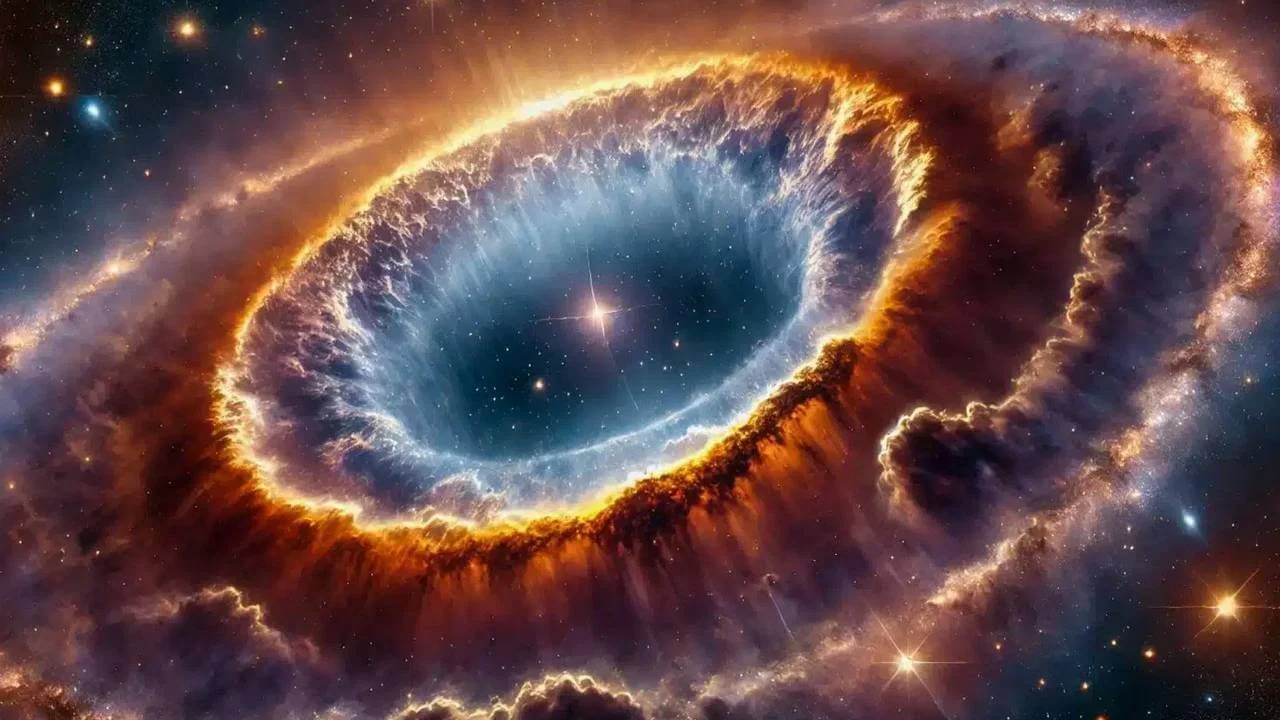Astronomers Discover an “Interstellar Tunnel” Connecting Our Solar System to Other Stars
A newly mapped channel of hot plasma may link our solar system to distant stars, offering fresh clues about the Milky Way’s complex structure.

Astronomers have identified what appears to be a vast, low-density pathway of hot plasma extending from our solar system toward distant regions of the galaxy. This structure, nicknamed an “interstellar tunnel,” may be part of a network of cosmic channels shaped by ancient stellar explosions.
The Local Hot Bubble
For millions of years, our solar system has drifted within a region known as the Local Hot Bubble, a zone roughly 300 light years across. This bubble likely formed when multiple supernovas heated surrounding gas, creating a high-temperature but low-density environment. Wisps of this hot plasma still trace the energetic events that sculpted the area.
Researchers have long suspected that the Local Hot Bubble might connect to other similar cavities in space. The latest findings suggest that some of these connections take the form of extended, tunnel-like channels.
Mapping the Cosmic Neighborhood
The discovery was made by a team from the Max Planck Institute using data from the eRosita X-ray telescope, part of the Spectrum-Roentgen-Gamma mission. By analyzing soft X-ray emissions and combining them with earlier ROSAT survey data, scientists mapped the distribution of hot gas in unprecedented detail.
They divided the sky into thousands of small segments, isolating faint signals from dust cavities, warm gas, and large-scale structures. This effort revealed a distinct channel pointing toward the Centaurus constellation, and possibly another leading toward Canis Major. These may represent just two branches of a more extensive network linking star-forming regions and superbubbles.
Revisiting Old Theories
The idea of interconnected, low-density cavities is not new. Decades ago, astronomers proposed that supernovas could carve out labyrinths in the interstellar medium. However, until now, direct observational evidence was limited. The eRosita data strengthens these theories by showing clear tunnel-like structures filled with hot plasma and bordered by dust.
Such formations may influence how matter, radiation, and magnetic fields move through the galaxy, with possible effects on cosmic ray paths and the flow of interstellar dust.
More Than Empty Space
Despite its apparent emptiness, the space between stars contains gas, dust, and magnetic fields that constantly interact. Supernova shock waves compress some regions while hollowing out others, leaving behind complex patterns of density and temperature.
In the case of the Local Hot Bubble, the average thermal pressure appears lower than expected, suggesting it may be open in certain directions—possibly through these newly identified channels.
Looking Ahead
While the broad outlines of these structures are becoming clearer, many details remain unknown. Some channels appear continuous, while others are blocked or fragmented. Further observations with more sensitive X-ray instruments and refined models of gas distribution will help explain how these pathways formed and evolved.
The presence of an interstellar tunnel underscores how much remains to be learned about our own galactic neighborhood. What once seemed like an empty void now reveals a dynamic and interconnected landscape shaped by ancient stellar cataclysms.
This article has been fact checked for accuracy, with information verified against reputable sources. Learn more about us and our editorial process.
Last reviewed on .
Article history
- Latest version
- Last updated by Dayyal Dungrela, MLT, BSc, BS
- Peer reviewed by Dr. Arjun Patel, PhD
Reference(s)
- Yeung, Michael C. H.., et al. “The SRG/eROSITA diffuse soft X-ray background - I. The local hot bubble in the western Galactic hemisphere.” A&A, vol. 690, 29 October 2024, doi: 10.1051/0004-6361/202451045. <https://doi.org/10.1051/0004-6361/202451045>.
- Frisch, Priscilla C.., et al. “The Interstellar Medium Surrounding the Sun.” Annual Review of Astronomy and Astrophysics, vol. 49, no. 1, pp. 237-279., doi: 10.1146/annurev-astro-081710-102613. <https://doi.org/10.1146/annurev-astro-081710-102613>.
Cite this page:
- Posted by Aisha Ahmed